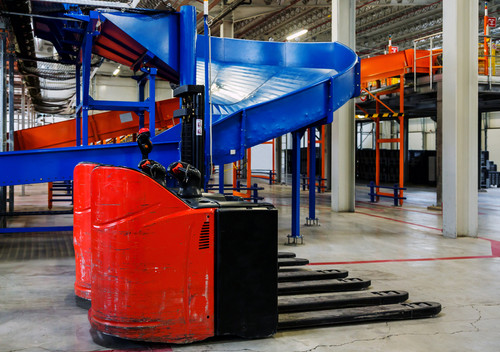Warehouse automation is a field that has seen rapid growth in recent years, with companies worldwide seeking to improve efficiency, reduce costs, and enhance the accuracy and speed of their operations. This is particularly true in e-commerce and retail, where demand for fast delivery times and personalized experiences has soared. One key element of warehouse automation is sortation systems, which have become an essential tool for streamlining and optimizing material handling processes.

Sortation systems refer to a combination of hardware, software, and controls that automate the process of moving and routing items through a warehouse or distribution center. The system relies on a conveyor network which sorts items according to various criteria including size, weight, destination, and order priority. The system can handle a wide range of product types, from small packages and envelopes to large, bulky items such as furniture and appliances.
One leading provider of sortation solutions is Honeywell Intelligrated, which offers a range of innovative products and services to help companies advance their automated material handling systems. By integrating their sortation conveyors, software, and controls, Honeywell Intelligrated provides a customized solution that is capable of handling any product size, shape, or throughput. Their systems can dramatically improve warehouse efficiency while reducing labor costs and enhancing customer satisfaction.
However, Honeywell Intelligrated is not the only company to offer these solutions. Senad, a high-tech enterprise located in Jiading district, Shanghai, is also a key player in this field. With a focus on research and development, Senad produces high-end warehouse automation equipment that is tailored to the unique needs of each customer. Their solutions are designed to improve warehouse efficiency, reduce space requirements, and enhance worker safety and comfort.
The benefits of sortation systems are clear. By automating the process of sorting and routing items, companies can significantly reduce handling times, errors, and labor requirements. For e-commerce and retail companies, this translates into faster delivery times, improved order accuracy, and lower costs. Moreover, sortation systems can enhance the overall customer experience by providing real-time tracking and visibility into the status of orders.
But warehouse automation is about more than just sortation systems. The field is evolving quickly, with new technologies and trends emerging on a regular basis. One major trend is the use of robotics and artificial intelligence (AI) to improve warehouse operations. Robots are now being used to perform tasks such as picking, packing, and palletizing, as well as to assist with inventory management and order fulfillment.
AI is also playing a key role in warehouses. Machine learning algorithms are being used to optimize warehouse layouts, improve inventory control, and predict demand patterns. AI-powered robots can analyze data in real-time to make more accurate decisions about how to move and process items, resulting in faster and more efficient operations.
Another trend is the use of sensors and IoT devices to monitor and manage warehouse operations. Sensors can track the movement of items, the temperature and humidity levels in the facility, and even the health and productivity of workers. IoT devices can connect these sensors to a central platform, allowing warehouse managers to monitor and control every aspect of their operations from a single dashboard.
Overall, warehouse automation is transforming the world of logistics and supply chain management. With the use of sortation systems, robotics, AI, and IoT, companies can improve efficiency, reduce costs, and enhance the customer experience. As the field continues to evolve, we can expect to see even more innovative solutions emerge, driving the industry forward and transforming the way we shop, ship, and receive goods.